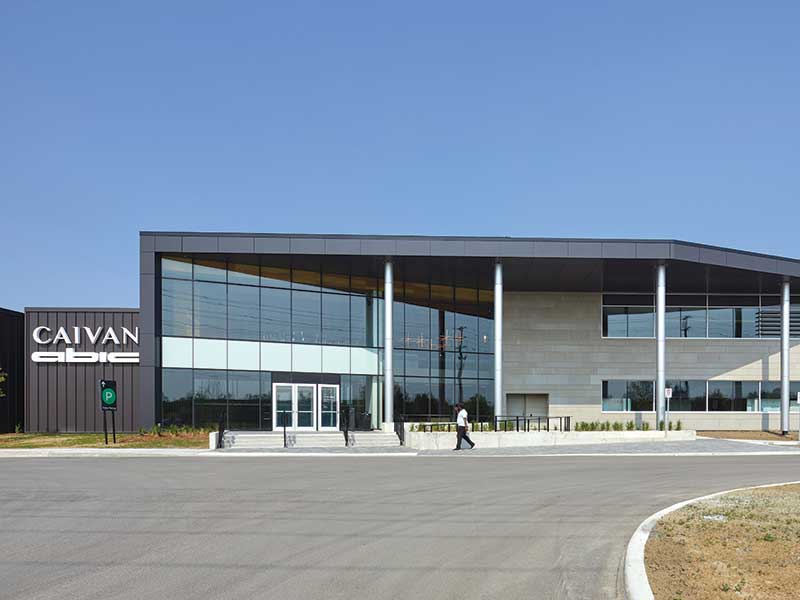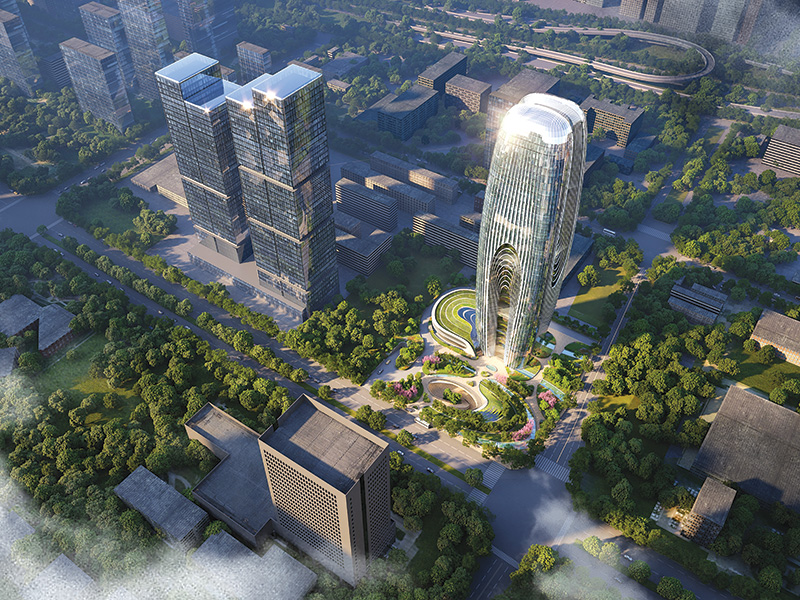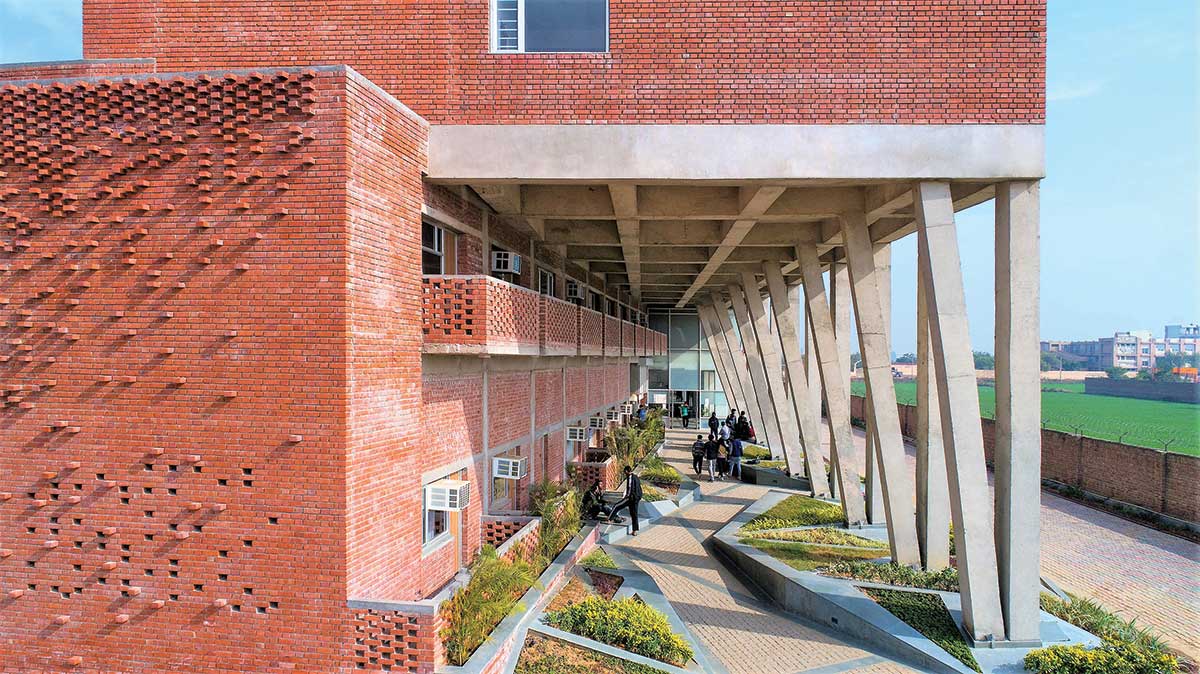
Fact File
Typology: Hostel
Location: Gurugram, Haryana
Client: St. Andrews Group
Site Area: 60,700 sq.m
Built-Up Area: 60,000 sq.ft.
Architect Firm: Zero Energy Design Lab
Structural Consultant: Design Solutions
Civil & Facade: LS Associates
Photographers: Noughts and Crosses | Andre J. Fanthome
Products
Concrete: Ultratech
Flooring: KOTA
Air Conditioning: Samsung
Paint: Asian Paints
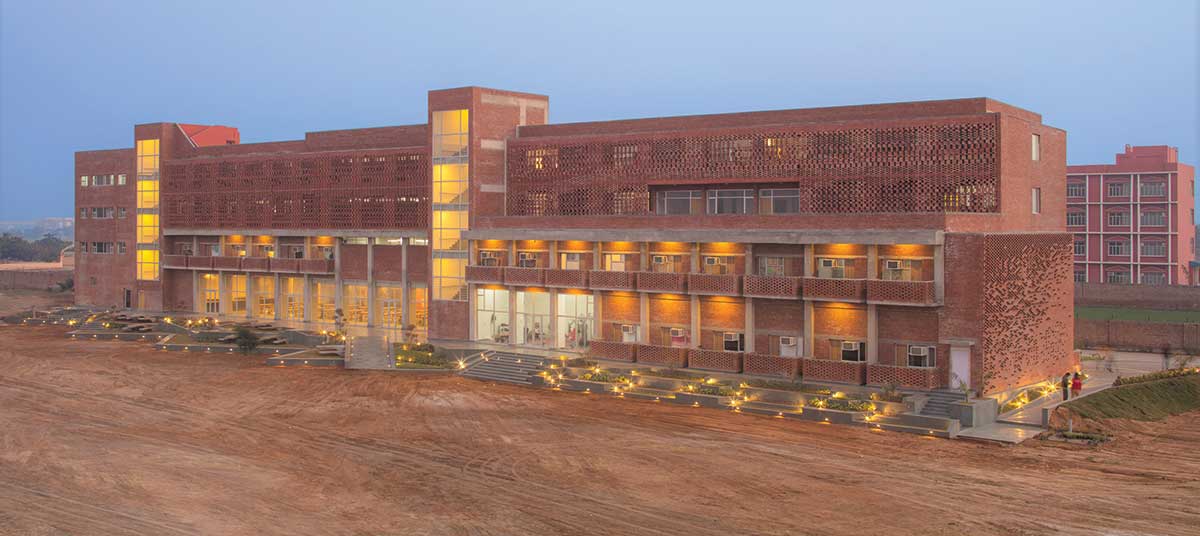
The hostel building at the St. Andrews Institute of Technology and Management maintains a strong horizontal emphasis and utilizes a restrained material palette consisting of fair-faced concrete exposed in the robust supporting structure in the façade. The design of the hostel block creates a sense of community and reflects the contemporary nature of the university buildings. It houses a fluid sequence of socially functional and environmentally sustainable spaces.
We believe that sustainability is not separate from design and we therefore design sustainable interventions as indispensable components that enhance the experience of the built environment
Principal Architects Payal & Sachin Rastogi
Planning & Design
The building reinterprets Indian vernacular architecture with ideas relevant to the present times and techniques. Anticipating the importance of student interaction with the spaces, the galactic indoor spaces are design extensions of the exteriors. The layered interior planning of the building with passive design strategies facilitates comfortable intercommunication amongst the students.
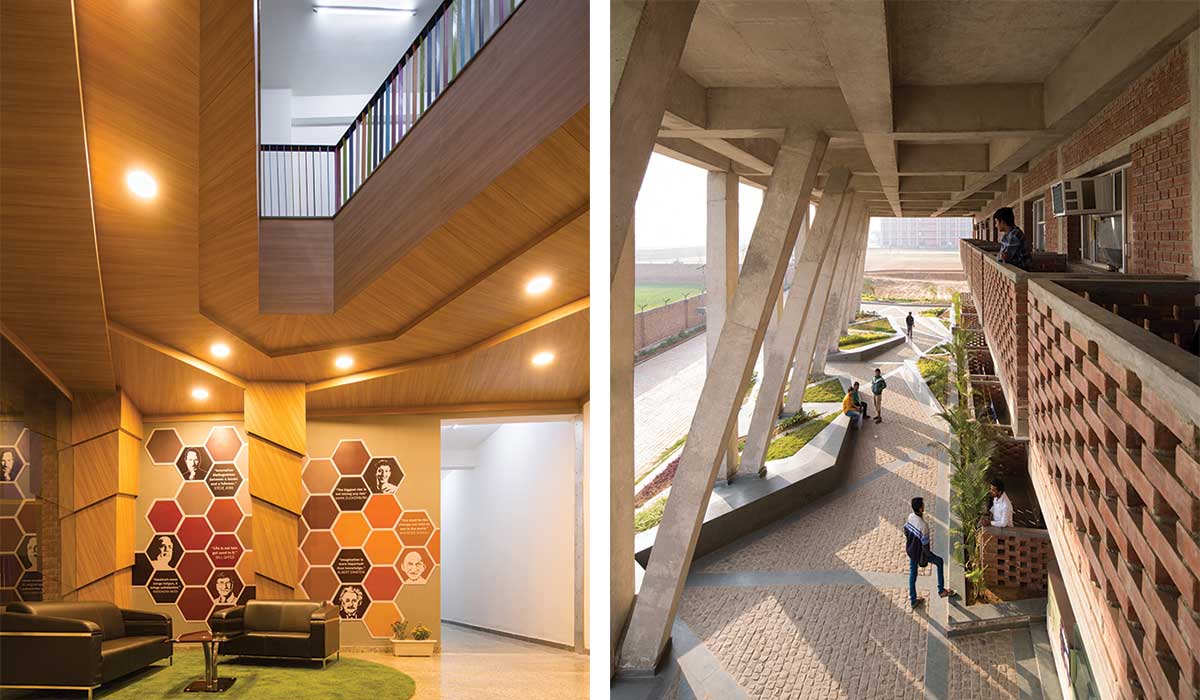
The contorted central atrium allows natural light to penetrate deeper into the building. It also acts as a solar chimney that takes away the stale and hot air within, through the stack effect. The combination of the angled volume of the part ground floor and the linear shape of the first floor create a shaded entrance and an open terrace on the south and north facades, respectively. The interactive composition forms the social heart of the block, creating a stimulating experiential space for the students.
Construction Methodology
The orientation of the building, materiality and creation of spaces derive existence through comprehensive research, based on climatic conditions, sun path analysis and air movement. The brick envelope of the building harnesses software technology such as Ecotek, Grasshopper, Ladybird and Rhino to create a sustainable design narrative.
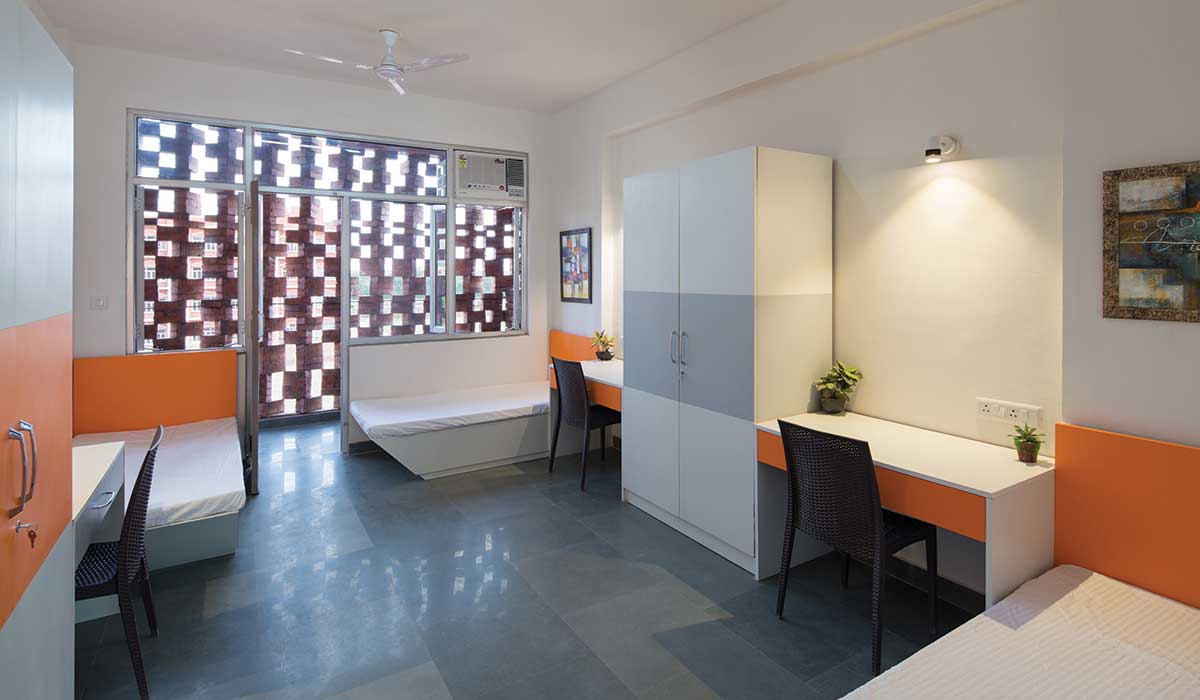
The use of software technology and computational studies is pertinent to the design of the brick jaali that circumscribes the building, providing thermal insulation and ingress of diffused natural light. The simulations or the parametric scripts designed using software and conclusions drawn from the analysis of climatic conditions discussed the existing radiation and the appropriate amount of radiation that should enter through the façade. Later, running the simulations on each brick, the architects derived a composition that comprises arrangements/layers of bricks rotated and then placed at regular intervals.
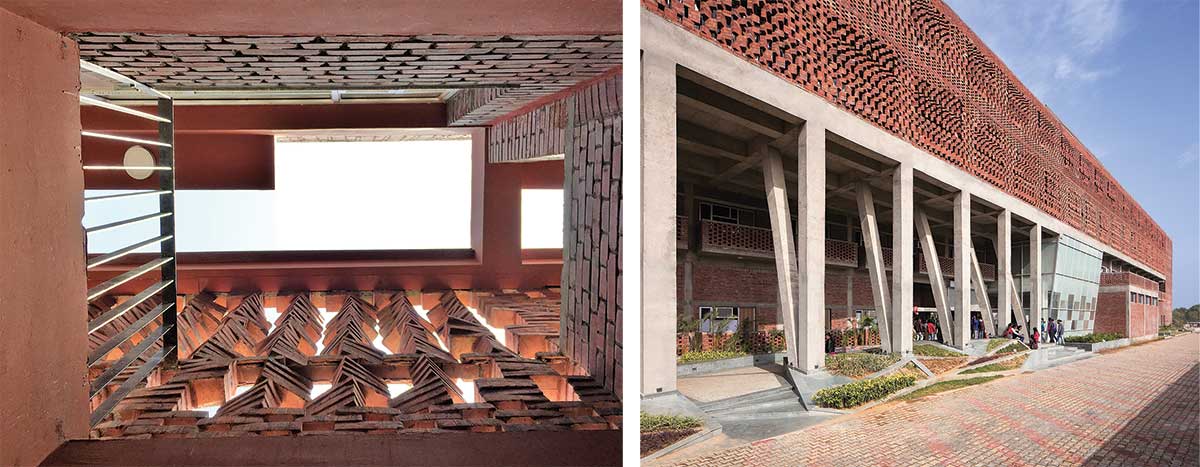
The jaali façade has 1- inch thick steel bars fixed on R.C.C beams using Hilti chemicals. To hold the brick arrangement, a single piece steel bar pierces through the customized bricks manufactured with holes, no cement mortar was used to construct the 21- ft long jaali envelope.
The jaali profile and its composition reduce the heat energy of direct radiations by 70%, and also provide daylighting levels in the dorms equal to 250 lux. The balconies located within the brick skin are 4 feet wide. The balconies or the buffer zones between indoor and outdoor spaces control the mean temperature of the building throughout the year.

